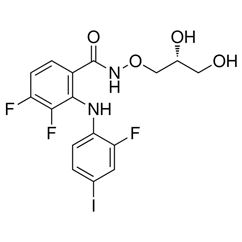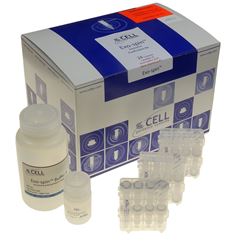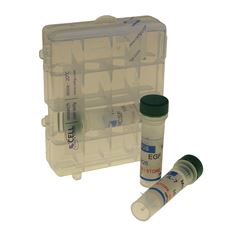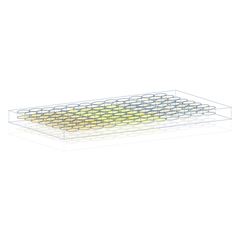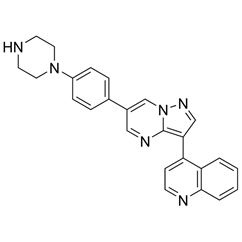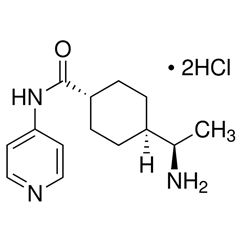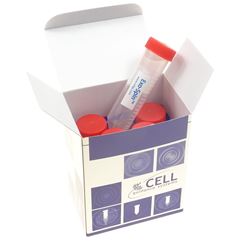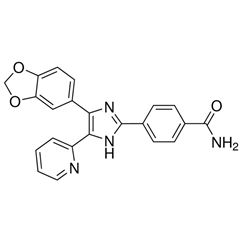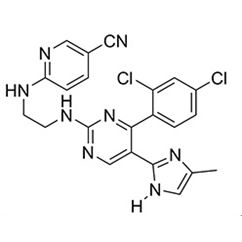PODS® Human SCF
PODS® Technology
PODS® proteins are made using an insect cell expression system in which the active protein is co-expressed alongside polyhedrin carrier protein. Polyhedrin forms microcrystals within insect cells which specifically capture the active protein to form a co-crystal complex. The active protein is captured in its nascent, natively folded form with limited scope for proteolytic degradation. Consequently, excellent levels of bioactivity are observed. The PODS® co-crystals provide a sustained release mechanism and can be used to functionalize surfaces. For further details, please refer to the PODS® Technology page.
Product Description
The product contains the polyhedrin protein co-crystalized with Human SCF. Stem Cell Factor (SCF) is a cytokine made by fibroblasts and endothelial cells. SCF binds to the receptor c-Kit/CD117 and plays a critical role in the maintenance, survival, and differentiation of hematopoietic stem cells. Human SCF shows no activity on mouse cells, but mouse and rat SCF are active on human cells.
Usage Recommendation
PODS® co-crystals provide a depot of proteins which are steadily secreted. It has been estimated that the biological activity of 50 million PODS® co-crystals generates the same peak dose as 3.3 µg of standard recombinant protein. However, at 5 days following the start of seeding the PODS® co-crystals, there are more than 50% of these peak levels still present in the culture system. Ultimately, the amount of PODS® co-crystals that is optimal for a particular experiment should be determined empirically. Based on previous data, we suggest using 50 million PODS® co-crystals in place of 3.3 µg of standard growth factor as a starting point.
To control for cross-reactivity with cells or as a negative control, we recommend using PODS® growth factors alongside PODS® Empty crystals, as the latter do not contain or release cargo protein.
Animal-Free
This product is produced with no animal derived raw products. All processing and handling employs animal free equipment and animal free protocols.
AA Sequence
Immobilization tag shown in blue.
MADVAGTSNR DFRGREQRLF NSEQYNYNNS KNSRPSTSLY KKAGFAAAPF TMEGICRNRV TNNVKDVTKL VANLPKDYMI TLKYVPGMDV LPSHCWISEM VVQLSDSLTD LLDKFSNISE GLSNYSIIDK LVNIVDDLVE CVKENSSKDL KKSFKSPEPR LFTPEEFFRI FNRSIDAFKD FVVASETSDC VVSSTLSPEK DSRVSVTKPF MLPPVAAKGG RA
Alternative Names
Stem Cell Factor, c-Kit Ligand, KL, steel factor, MGF
Research Use Only
This product is for Research Use Only.
PODS universal cargo antibody and ELISA
Use the PODS universal cargo antibody (PUCA) for western blots and other assays to monitor the release of cargo proteins released from PODS. This works with all PODS proteins with few exceptions. In addition, an optimized PUCA ELISA is available
| Product Details | |
|---|---|
| Length | 222 aa |
| Molecular Weight | 50 kDa |
| Structure | Dimer |
| Source | Spodoptera frugiperda (Sf9) cell culture |
| Accession Number | P21583 |
| Endotoxin Level | <0.06 EU/ml as measured by gel clot LAL assay |
| Formulation | PODS® were lyophilized from a volatile solution |
| Reconstitution |
PODS® co-crystals may be reconstituted at 200 million co-crystals/ml in sterile PBS. 20% glucose has a buoyant density closer to PODS® co-crystals and can be useful for aliquoting. PODS® co-crystals are highly stable when stored in aqueous solution (pH range 6 - 8). |
| Stability and Storage | Upon receipt, store at 4°C. PODS® co-crystals are stable for at least 1 year when dry and 6 months when resuspended. |
References
Fasséli Coulibaly, Elaine Chiu, Keiko Ikeda, Sascha Gutmann, Peter W. Haebel, Clemens Schulze-Briese, Hajime Mori, and Peter Metcalf. The molecular organization of cypovirus polyhedra. (2007) Nature. 446: 97-101.
Rey FA. Virology: Holed up in a natural crystal. (2007) Nature. 446: 35-37.
Mori H. Immobilization of Bioactive Growth Factors into Cubic Proteinous Microcrystals (Cypovirus Polyhedra) and Control of Cell Proliferation and Differentiation. (2010) NSTI-Nanotech. 3: 222-225.
Satoshi Abe, Hiroshi Ijiri, Hashiru Negishi, Hiroyuki Yamanaka, Katsuhito Sasaki, Kunio Hirata, Hajime Mori, and Takafumi Ueno. Design of Enzyme-Encapsulated Protein Containers by In-Vivo Crystal Engineering. (2015) Advanced Materials. 27(48): 7951-7956.

